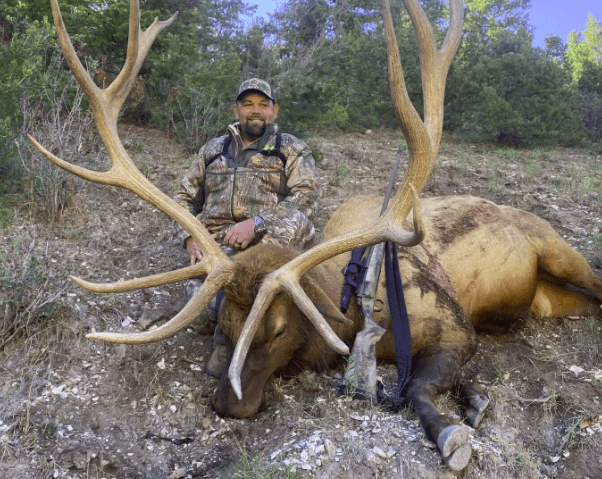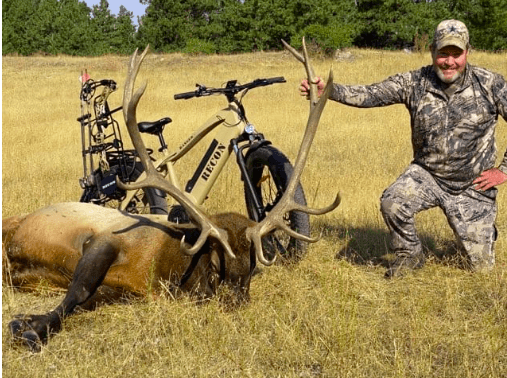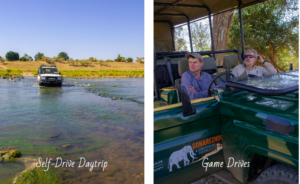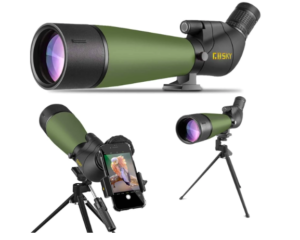
utah elk hunting.
Elk hunting is a popular and enjoyable activity for hunters in Utah. Utah has a wide variety of landscapes, a strong elk population, and a variety of hunting chances. Here’s a rundown on elk hunting in Utah, including license requirements, seasons, laws, and tips:
Permits and Licensing:
General Season: Elk hunting tags are offered to both citizens and non-residents through a limited license draw in Utah. These tags allow hunting possibilities in certain units and are distributed in accordance with quotas.
CWMU and Limited Entry:
There are also limited entrance badges and Cooperative Wildlife Management Unit (CWMU) permits available. These licenses enable exclusive access to certain units or private areas, allowing for a more regulated and specialized hunting experience.
Seasons for hunting:
Archery Season:
Archery elk hunting is usually done in September. It gives hunters the opportunity to experience the early bugling season and chase elk in a more close and demanding manner.
Muzzleloader Season:
Muzzleloader elk hunting often takes place in September or October. This season provides a one-of-a-kind and historically significant hunting experience, with hunters use muzzleloading rifles.
Rifle Seasons:
Rifle elk shooting season typically runs from late September to early November, depending on the unit. Rifle seasons allow hunters to take longer-range shots and boost their chances of success.
Units and Areas:
Utah has many hunting units, each with its own set of rules, quotas, and features. Some units have greater elk populations, but others have more restricted access and trophy-quality bulls.
The Utah Division of Wildlife Resources (DWR) offers complete unit maps, border descriptions, and information on the elk population, hunting pressure, and success rates for each unit.
Bag Limits & Regulations:
The DWR creates elk hunting rules, such as antler point limitations and harvest reporting requirements.
Bag limitations differ based on the unit and technique of hunting. The number of antlered or antlerless elk that can be harvested is limited in some units.
For the most up-to-date information about elk hunting in Utah, consult the Utah Big Game Application Guide and the hunting laws supplied by the Utah Division of Wildlife Resources. Consultation with local hunting outfitters, experienced hunters, or wildlife scientists can also give useful insights on specific units and hunting techniques.
How to hunt elk in utah
Elk hunting in Utah may be a difficult but rewarding experience. Here are some common elk hunting ideas and methods to aid you on your Utah elk hunting adventure:
Scout the Area:
Spend time scouting the unit you will be hunting in before the season begins. Tracks, droppings, rubs, and wallows are all evidence of elk activity. Keep an eye out for eating sites, water supplies, and sleeping spots.
Identify possible hunting sites and elk densities using maps, GPS, and aerial images.
Understand Elk Behavior:
Understanding elk behavior can help you have a more effective hunt. Discover their rutting routines, dietary habits, and preferred environment.
Learn about elk vocalizations including bugling and cow sounds, and practice your calling tactics to attract bulls during the rut.
Prepare Your Approach:
When planning your approach to elk, keep the wind direction in mind. Because elk have a good sense of smell, it is critical to keep downwind to avoid being noticed.
To get near to elk without alerting them, use geography and cover to your advantage. Move softly and break up your silhouette with natural characteristics.
Making Calls:
Calling can be an efficient method of attracting elk. Learn to imitate elk noises such as bugles, cow calls, and calf cries.
Begin with gentle calls and progressively raise the intensity if a response is received. Before making your next step, be patient and listen for elk answers.
Hunt During the Rut:
Elk hunting is best during the rutting season because bulls are actively looking for cows and are more responsive to calls.
During the rut, concentrate your efforts on places where elk are active, such as meadows, open spaces, and transition zones between feeding and sleeping sites.
Stay Mobile:
Elk may travel long distances, so be prepared to relocate if you’re not having luck in your current location.
Glassing skills can help you see elk from a distance and make educated judgments about your hunting strategy.
Prepare for Changeable Weather:
Weather in Utah may be unpredictable, so bring suitable clothing and equipment to keep comfortable in different temperatures and precipitation.
Be prepared to hunt in the early morning and late evening when temps may be colder.
Ethical and Legal Hunting:
Learn about Utah’s hunting rules, including as bag limits, weapon limitations, and hunting season dates.
Use ethical hunting practices such as assuring a clean and humane shot, respecting private property limits, and following the leave-no-trace concept.
Remember that hunting success varies, so approach elk hunting with patience, tenacity, and respect for the animals and the environment.
To improve your elk hunting abilities, seek advice from experienced hunters, area outfitters, or attend workshops and seminars given by wildlife authorities.
Best Utah Elk hunt outfitters

While there are several outfitters in Utah that offer elk hunting services, it’s important to note that individual preferences and requirements may vary. Here are a few well-regarded outfitters in Utah known for their elk hunting experiences:
R & K Hunting Company:
R & K Hunting Company is a reputable outfitter with over 40 years of experience in guiding elk hunts in Utah. They offer a variety of hunting options, including fully-guided and semi-guided hunts on both private and public lands.
MossBack Outfitters
MossBack Outfitters is known for their trophy elk hunts in Utah. They provide fully-guided hunts in premier hunting areas, focusing on quality bulls and a personalized hunting experience.
Utah Elk and Deer Outfitters
Utah Elk and Deer Outfitters specialize in guided elk hunts across different units in Utah. They offer both archery and rifle hunts, focusing on providing clients with high-quality opportunities to pursue trophy-class bulls.
Buckhorn Outfitters
Buckhorn Outfitters has a long-standing reputation for elk hunting in Utah. They offer guided hunts in prime elk habitats, providing knowledgeable guides and access to private lands.
Coby Hunt Guide Service
Coby Hunt Guide Service offers guided elk hunts in Utah’s premier hunting units. They emphasize personalized attention and tailor hunts to individual skill levels and preferences.
When selecting an outfitter, it’s essential to consider factors such as their experience, reputation, success rates, guiding methods, accommodations, and pricing. It’s also recommended to reach out to the outfitters directly, discuss your specific hunting goals and preferences, and ask any questions you may have before making a decision. Additionally, reading reviews and testimonials from previous clients can provide valuable insights into the outfitter’s services and customer satisfaction.
Utah Elk hunting with an e bike.

Elk hunting with an eBike in Utah can provide several benefits, such as better mobility and less physical exertion. Here are some elk hunting guidelines for using an eBike in Utah:
Choosing the Best E-Bike:
Choose an eBike that is ideal for off-road use and can endure the harsh terrain experienced during elk hunting. Look for vehicles with decent suspension, long-lasting tires, and a large battery range.
Prepare Your Routes:
Plan your hunting routes ahead of time with digital maps and GPS gadgets. Determine which trails and routes are legal for eBike usage and will lead you to elk-rich regions.
Consider regions that offer a good mix of eBike accessibility and closeness to elk habitat.
Quietness and stealth:
The silent running of an eBike is one of its benefits. Even with the electric motor, it’s critical to be as quiet as possible to prevent alerting elk.
When approaching suitable hunting grounds, go at a cautious and steady pace. Reduce unwanted noise, such as rustling gear or striking trees by mistake.
Make Use of the Environment:
Use the eBike’s ability to go about fast and efficiently. Use it to go to isolated places or to move quickly between hunting locations.
Be careful of the elk’s line of sight and try to conceal your approach using natural factors such as hills and foliage.
Carry the Required Equipment:
Pack your hunting supplies and equipment in a way that promotes safety and accessibility while riding the eBike. To transport your stuff, use tight, waterproof bags or panniers.
Make sure you have all of the appropriate hunting equipment, including as your firearm, optics, calls, and other necessities.
Battery Management:
Keep track of the battery life of your eBike and schedule your hunting excursions appropriately. Check that you have adequate battery power to go the trip and return safely.
Carry an extra battery or a portable charger to increase your riding range, especially if you want to be out for a lengthy amount of time.
Observe Hunting Regulations:
Learn about the hunting restrictions in Utah that apply to eBikes. Make certain that you follow all rules regarding hunting seasons, unit borders, and motorized vehicle limits.
Considerations for Safety:
When riding an eBike for hunting, always emphasize safety. Wear adequate safety equipment, such as a helmet and reflective clothes if necessary.
Keep an eye out for other hunters and outdoor enthusiasts who may be using the same routes or regions as you.
Remember that hunting success is ultimately determined by elements such as elk behavior, hunting skills, and local knowledge. Using an eBike can improve your mobility and accessibility, but you must use ethical hunting techniques and protect animals and public areas.
Utah elk hunting tags explained

Elk hunting tags, also known as permits or licenses in Utah, are distributed via a limited license draw system. Understanding how the tag system works may aid you in acquiring an elk hunting tag in Utah. Here’s how Utah’s elk hunting tag system works:
Tags for Limited Entry:
Limited entry tags are highly sought after because they provide exclusive hunting chances in units noted for strong elk herds and trophy potential.
These tags are distributed using a random drawing method in which candidates collect preference points that enhance their chances of being chosen in coming years.
The number of limited entry tags available is limited and fluctuates based on the hunting unit and population targets established by the Utah Division of Wildlife Resources.
General Season Tags:
General season tags make elk hunting more accessible over a larger variety of units.
A restricted license draw procedure is also used to award general season tags. However, the number of available tags is usually more than the number of limited access tags.
Both residents and non-residents can apply for general season tags, and candidates can earn preference points to boost their chances of being picked in future years.
Landowner Tags:
Landowner tags are another type of elk hunting tag available in Utah. These tags are given to private landowners who satisfy certain criteria and have hunting access on their property.
During authorized hunting seasons, landowner tags allow hunters to hunt on private grounds.
They are not available through the regular limited license draw system and can be obtained through arrangements with landowners or authorized agents.
It is vital to understand that distinct application dates, costs, and rules apply to Uthttps://en.wikipedia.org/wiki/Utahah’s elk hunting tags. Every year, the Utah Division of Wildlife Resources (DWR) publishes detailed information on the application process, drawing results, and particular tag distributions.
Hunters must submit an application within the allotted application time, pay the relevant fees, and state their hunting preferences (such as weapon type, unit preferences, and hunt dates) in order to participate in the restricted license draw. The drawing is conducted by the DWR, and successful candidates are notified whether they have been given a tag.
For accurate and up-to-date information about elk hunting tags, it is advised that you check the Utah Big Game Application Guide and remain up to speed with the newest information on the DWR’s official website.
FAQs Answered:
Can I hunt elk on Utah public land?
Yes, there are plenty of elk hunting possibilities on public property in Utah. The state boasts extensive hunting opportunities on national forests, Bureau of Land Management (BLM) properties, and state-owned grounds.
Is it necessary to get a specific permission or tag to hunt on public land in Utah?
In Utah, whether hunting on public or private land, you must get the right elk hunting tag through the restricted license draw system. The unit, weapon type, and season you can hunt are all determined by the tag you have.
Can I hunt elk in Utah with an ATV or other off-road vehicle?
The use of off-road vehicles (ORVs), especially ATVs, for elk hunting in Utah is governed by strict rules. ORV use may be restricted in some regions due to seasonal closures or designated paths. It is important to become acquainted with the rules and regulations governing the usage of ORVs in the unit where you intend to hunt. Using ORVs to explore distant locations can be a helpful technique in general, but it is critical to respect the environment and follow all current legislation.
Is there a limit to the number of points I may get for elk hunting in Utah?
There is no maximum amount of preference points you may acquire for elk hunting in Utah. The more preference points you have, the more likely you are to be assigned a limited entrance tag in the future.
Are there any youth or special permit elk hunting possibilities in Utah?
Yes, Utah has unique youth hunts and other restricted permit elk hunting options. These hunts are aimed to provide young hunters or specialized groups, like as handicapped hunters or military veterans, a one-of-a-kind experience. These permits’ application procedure and conditions may differ from those of ordinary restricted entry or general season hunts.
Similar articles.
- Moose Hunting Colorado. When Is the hunting season and how do you hunt Moose?
- British Columbia Mountain Goat Hunt. All You Need To Know.
- What can you hunt in Alaska? Can tourists hunt in Alaska?
- Caribou Hunting Alaska: What Are The Hunting Laws? All You Need To Know.
- Gray Lodge Wildlife Area Fully Explained.






